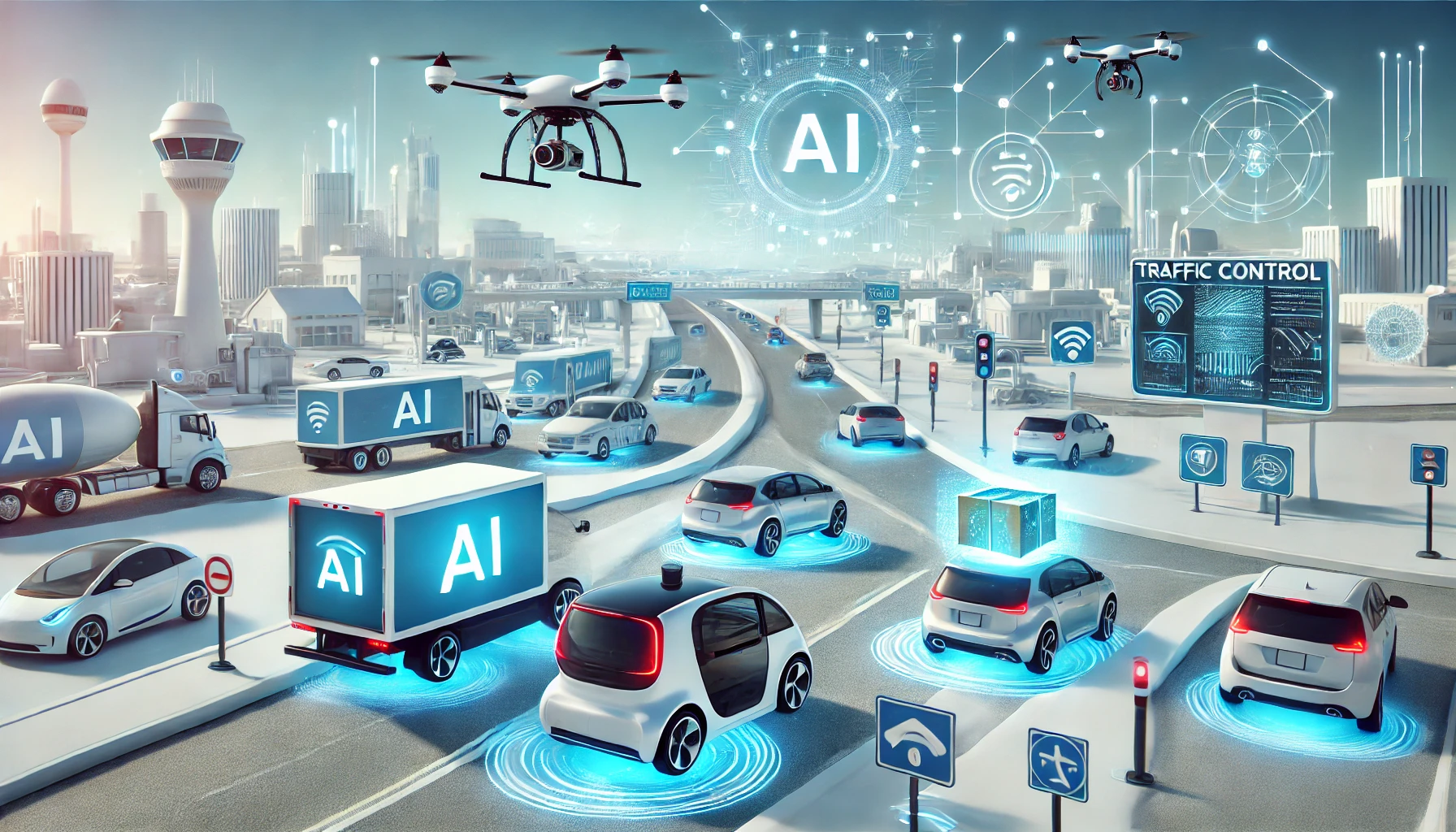Introduction
Artificial intelligence (AI) is rapidly transforming industries across the board, and the road and transportation sector is no exception. From self-driving cars to smart traffic management systems, AI is driving innovation and reshaping how we move. Let’s delve into the specific ways AI is making a difference, exploring real-world examples and scenarios along the way.
1. Autonomous Vehicles: The Road to the Future
Perhaps the most visible application of AI in transportation is the development of autonomous vehicles (AVs), also known as self-driving cars. AI algorithms, coupled with advanced sensor technology, enable AVs to perceive their surroundings, make decisions, and navigate roads without human intervention.

- Scenario: Imagine a future where you can summon a self-driving car with your smartphone, sit back, and relax or work while the car safely transports you to your destination. This is the promise of AVs, offering increased convenience, reduced traffic congestion, and improved safety.
- Examples: Companies like Tesla, Waymo, and Cruise are heavily invested in AV technology, conducting extensive testing in various cities. While fully autonomous vehicles are not yet widely available, they are rapidly evolving, with some companies offering limited self-driving capabilities in specific areas.
2. Smart Traffic Management: Easing Congestion
AI is also being used to optimize traffic flow and reduce congestion in cities. Smart traffic management systems analyze real-time data from various sources, such as traffic cameras, sensors, and GPS devices, to understand traffic patterns and predict potential bottlenecks.

- Scenario: AI-powered systems can dynamically adjust traffic light timings to optimize traffic flow, suggest alternative routes to drivers, and even provide personalized recommendations to commuters based on their preferences and real-time conditions.
- Examples: Cities like Singapore, London, and Los Angeles have implemented smart traffic management systems that leverage AI to reduce congestion and improve travel times. These systems have shown promising results in improving traffic efficiency and reducing emissions.
3. Predictive Maintenance: Keeping Roads Safe
AI is playing a crucial role in predictive maintenance for both vehicles and infrastructure. By analyzing data from sensors and other sources, AI algorithms can predict potential issues before they occur, allowing for timely maintenance and preventing costly breakdowns or accidents.

- Scenario: AI-powered systems can monitor the condition of roads, bridges, and other infrastructure, identifying areas that require attention. This allows for proactive maintenance, preventing potholes, cracks, and other hazards that can lead to accidents.
- Examples: The Netherlands is using AI to monitor the condition of its roads, predicting when maintenance is needed and optimizing repair schedules. This approach helps to extend the lifespan of infrastructure and improve road safety.
4. Enhanced Road Safety: Reducing Accidents
AI is contributing to enhanced road safety through various applications, including advanced driver-assistance systems (ADAS) and AI-powered cameras. ADAS features, such as lane departure warning, adaptive cruise control, and automatic emergency braking, use AI to assist drivers and prevent accidents.

- Scenario: AI-powered cameras can monitor driver behavior, detecting signs of drowsiness or distraction and providing alerts to prevent accidents. These systems can also be used to identify and address high-risk areas on roads.
- Examples: Many modern vehicles come equipped with ADAS features that utilize AI to improve safety. Additionally, cities are exploring the use of AI-powered cameras to monitor traffic and identify dangerous driving behaviors.
5. Logistics and Supply Chain Optimization: Streamlining Deliveries
AI is revolutionizing logistics and supply chain management in the transportation sector. By analyzing data on traffic, weather, and other factors, AI algorithms can optimize delivery routes, predict potential delays, and improve overall efficiency.

- Scenario: AI-powered systems can help delivery companies optimize their routes, ensuring that packages are delivered in the most efficient and timely manner. This not only reduces costs but also improves customer satisfaction.
- Examples: Companies like DHL and FedEx are using AI to optimize their logistics operations, improving delivery times and reducing fuel consumption. AI is also being used to automate warehouse operations and improve supply chain visibility.
Global Examples of AI Implementation in Transportation
- Singapore: Singapore is a leader in smart mobility, with extensive use of AI in traffic management, autonomous vehicles, and public transportation.
- China: China is investing heavily in AI-powered transportation solutions, including autonomous vehicles, smart traffic systems, and facial recognition for public transportation.
- United States: The US is home to numerous companies developing AV technology, with states like California and Arizona serving as testing grounds for self-driving cars.
- Europe: European countries like the Netherlands and Germany are utilizing AI for infrastructure maintenance and traffic management.
Challenges and Considerations
While AI offers tremendous potential for the transportation sector, there are also challenges to consider:
- Data Privacy: The use of AI in transportation raises concerns about data privacy, particularly with the collection and analysis of personal data.
- Safety and Reliability: Ensuring the safety and reliability of AI-powered systems, especially autonomous vehicles, is crucial.
- Ethical Considerations: AI algorithms must be developed and used ethically, addressing potential biases and ensuring fairness.
- Job Displacement: The automation of transportation tasks through AI could lead to job displacement in certain sectors.
Conclusion
Artificial intelligence is poised to revolutionize the road and transportation sector, offering a wide range of benefits, from improved safety and efficiency to reduced congestion and emissions. As AI technology continues to advance, we can expect to see even more innovative applications in the years to come. However, it’s crucial to address the challenges and ethical considerations associated with AI implementation to ensure that these technologies are used responsibly and for the benefit of all.

Brilliant analysis! The beauty of Trump Coin is in its timing and purpose.
Thanks for your inspiration.
Really, I am very happy for your time.
Thanks again
Really enjoyed this post! While we’re sharing interesting finds, Sprunki incredibox is making waves in the music gaming scene.
Thanks for your comments.
Please look at the tutorial on YouTube